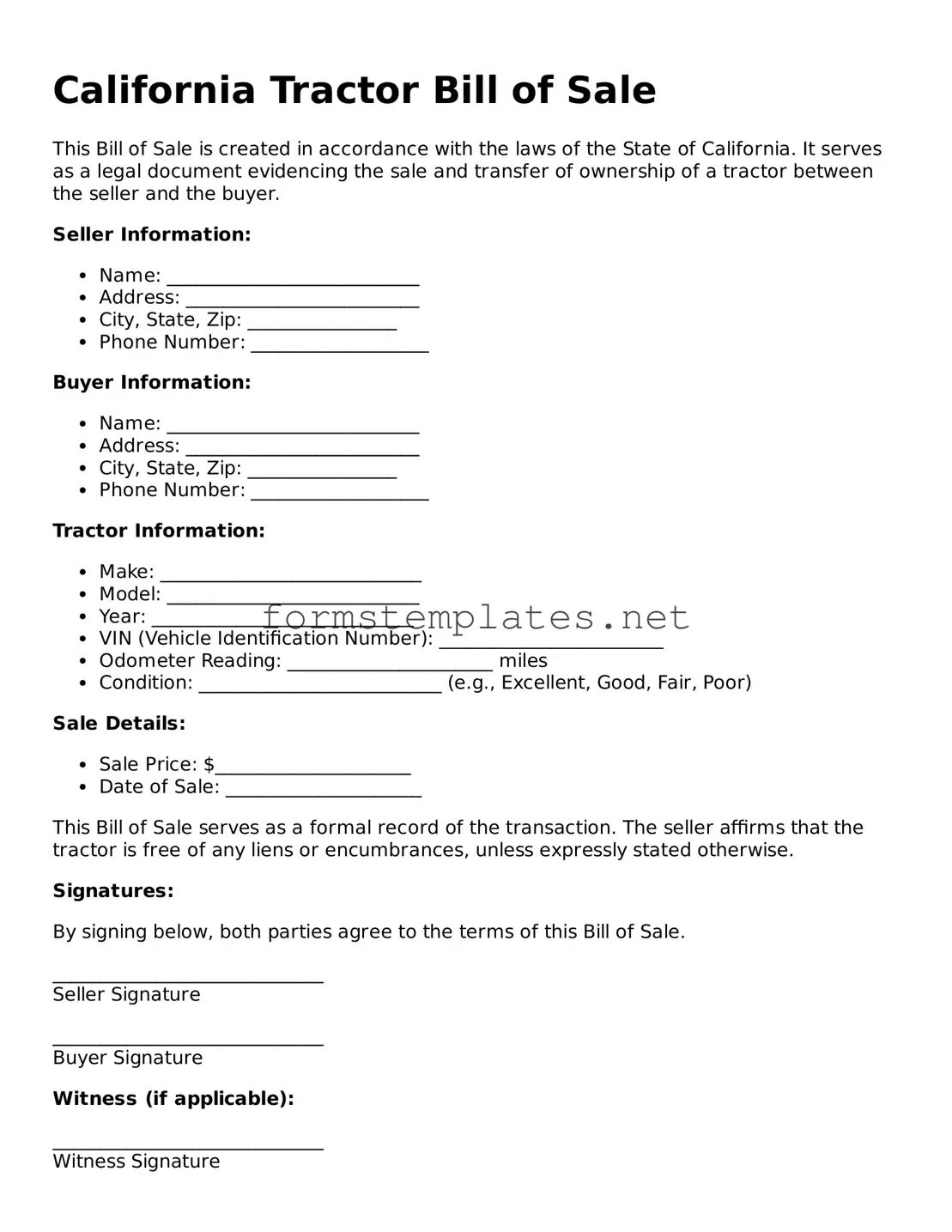California Tractor Bill of Sale
This Bill of Sale is created in accordance with the laws of the State of California. It serves as a legal document evidencing the sale and transfer of ownership of a tractor between the seller and the buyer.
Seller Information:
- Name: ___________________________
- Address: _________________________
- City, State, Zip: ________________
- Phone Number: ___________________
Buyer Information:
- Name: ___________________________
- Address: _________________________
- City, State, Zip: ________________
- Phone Number: ___________________
Tractor Information:
- Make: ____________________________
- Model: ___________________________
- Year: ____________________________
- VIN (Vehicle Identification Number): ________________________
- Odometer Reading: ______________________ miles
- Condition: __________________________ (e.g., Excellent, Good, Fair, Poor)
Sale Details:
- Sale Price: $_____________________
- Date of Sale: _____________________
This Bill of Sale serves as a formal record of the transaction. The seller affirms that the tractor is free of any liens or encumbrances, unless expressly stated otherwise.
Signatures:
By signing below, both parties agree to the terms of this Bill of Sale.
_____________________________
Seller Signature
_____________________________
Buyer Signature
Witness (if applicable):
_____________________________
Witness Signature
_____________________________
Date
This document is effective as of the date written above.
